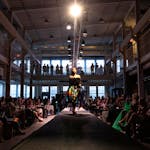Want a reminder of what went well in 2020? I've got just the thing. Each week, Inspired taps the wisdom and wit, creativity and compassion, bravery and bold thinking of Minnesotans who never saw a problem they didn't want to at least try to tackle. This year threw our Problem Solvers challenges beyond all challenges but they still hunkered down and got to work. Below, eight of them catch us up and share what they hope for in the new year.
Tracy Nielsen, executive director, HandsOn Twin Cities
Our partners have gone through a lot this year and their needs have shifted throughout the pandemic and civil unrest. So many partners made awesome, quick changes that a portion of our role was just communicating these changes and lending our support. We sent out 90,000 volunteer project-at-home kits (hygiene kits, school supply kits, snack packs), offered more virtual learning opportunities and saw a dramatic increase in pro bono programming; since July, we have launched about 60 projects, which totals about 11,520 pro bono hours and a value of more than $2.2 million. I am an inherently hopeful person, so I'm leaving 2020 grateful for all of the inspiration and kindness but also with a belief that we can keep doing better.
Michael Sack, disability activist and blogger
My south Minneapolis district had a 90% voter turnout, which is outstanding! I obviously hope that my Disability Awareness with Voting Facebook page helped a lot of people. My focus now is to advocate for a vaccine plan for individuals with disabilities in short order. I wholeheartedly believe that people with disabilities should be next in line after health care workers, as quite a few have weakened immune systems that could lead to troublesome complications if they were to catch the virus. Plus many live in group homes and attend day programs which results in close contact with others. Also: day training and habilitation services should, and must, receive more funding. Day programs are eliminating paid on-site jobs to focus on community employment and recreation. That is not fair to some who cannot work in the community because of a variety of barriers. If the Legislature can do something about that, they should.
Donna Minter, founder, Minnesota Peacebuilding Leadership Institute
When COVID-19 took over our lives, we pivoted to virtual trainings via Zoom and offered our online trainings on a "pay-what-you-can" basis. Because our programming has always included racial, historical, cultural, and structural trauma healing language and concepts, people responded after the tragedy of Mr. [George] Floyd's murder in powerful and positive ways. Too often when terrible things happen, like COVID-19 and racism, people get their basic human need for justice confused with the impulse to seek revenge. We teach how to transform the trauma into nonviolent power with positive, productive alternatives to revenge.
Jin Lee Palen, executive director, Minnesota Association of Community Mental Health Programs
The pandemic has shined a spotlight on the existing barriers in our state's mental/chemical health care models and programs. We've patched them up over the years, but this year we were forced to take a hard look at the underlying issues and the need to fix them. Now that these barriers are out in the open, there is more appetite from lawmakers, regulators and stakeholders to prioritize getting them fixed. We also saw that fears about telemedicine did not happen. Instead, we showed its efficacy. In many cases, we are in a better place because of it as we design and deliver mental health care models beyond the pandemic.
Alex Jackson Nelson, gender services consultant, Blue Cross and Blue Shield of Minnesota
I've worked with approximately 80 people so far and am really enjoying the support I am able to offer transgender and gender-nonbinary members. I continue to be surprised by how grateful members are to be talking with me and utilizing my services. My goal is to not only serve members directly but to use their experiences to address broader systemic barriers through working collaboratively across the [Blue Cross/Blue Shield] enterprise. I hope 2021 brings a social and political environment that values the human rights of everyone. This value cannot only be represented personally or socially but needs to be reflected when building policies and protocols to ensure that inequities are recognized, addressed, and that work continues to shift systems that are inherently inequitable.
Dr. Joe Hobot, CEO, American Indian OIC
We have had numerous success stories throughout the year but the eight graduates of our accredited high school, Takoda Prep of AIOIC, stand out for me as an incredible achievement during all the troubles our city endured. The greatest opportunity of this difficult year was that the urban Indigenous community, particularly in Minneapolis, continued to emerge as the leading force for change. Many of our community's efforts were born out of necessity and as such were often overlooked by outsiders for their innovation and importance to the overall functioning of our society. The year 2020 opened the eyes of so many to the need to fight systemic racism and finally end the disparities that have been plaguing communities of color and Indigenous people for generations. Suddenly, we find ourselves with allies that had not been there before. This makes me very hopeful for the future.
Maree Hampton and Katherine Myers, co-founders, LiveMore ScreenLess
Increased screen use during the COVID pandemic accelerated the call for digital well-being practices for our physical, mental, social, emotional and cognitive health. To that end, we implemented a digital well-being program at Faribault High School, conducted a train-the-trainer series with Minnesota youth librarians and produced, along with our youth council, educational webinars including for the Minnesota Department of Health. We launched a crowdfunding campaign for a national youth digital well-being leadership and certificate program. Education and youth leadership are needed as we seek to thrive in the digital age.






